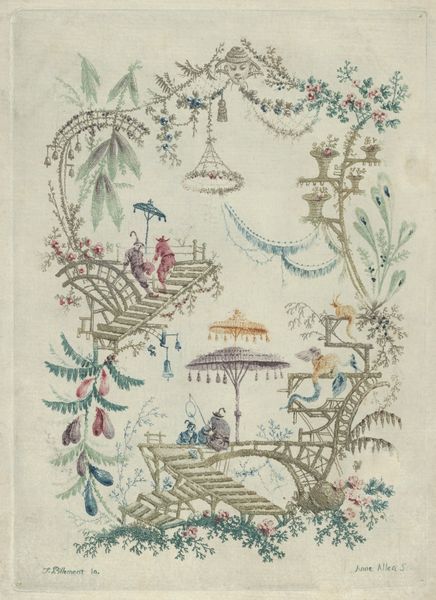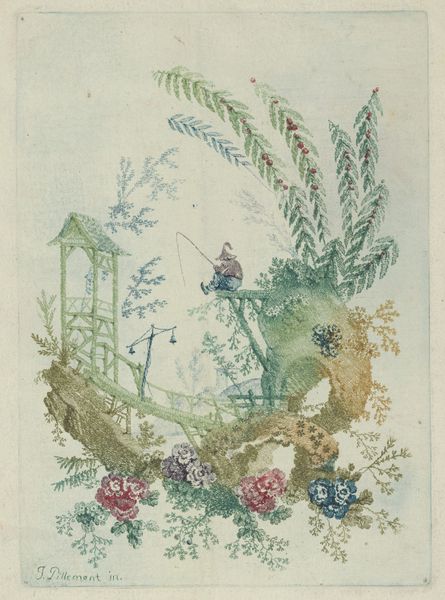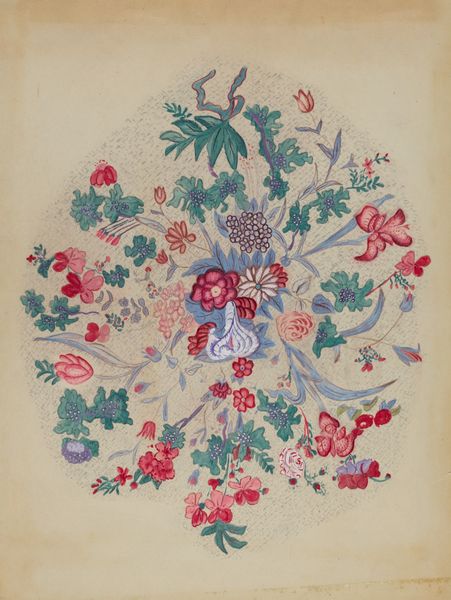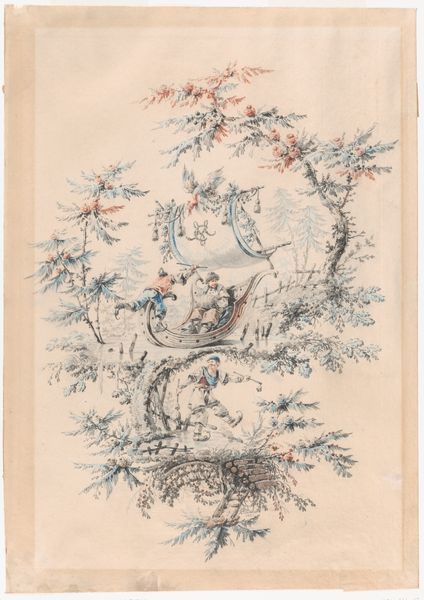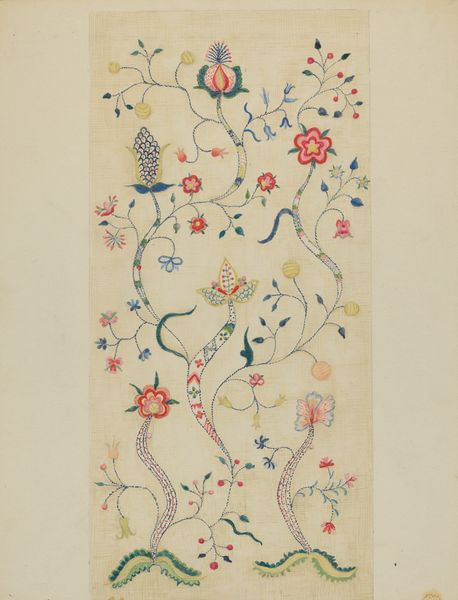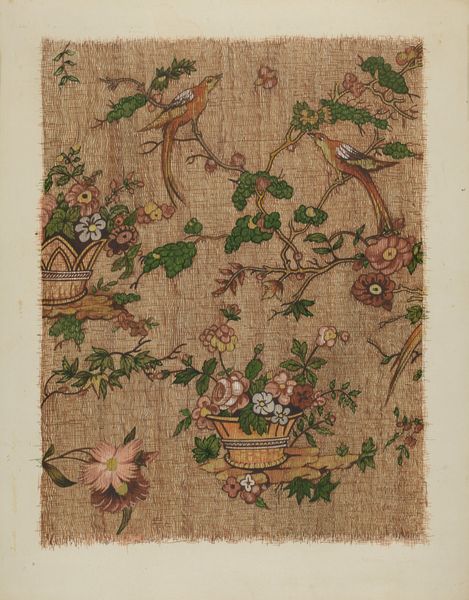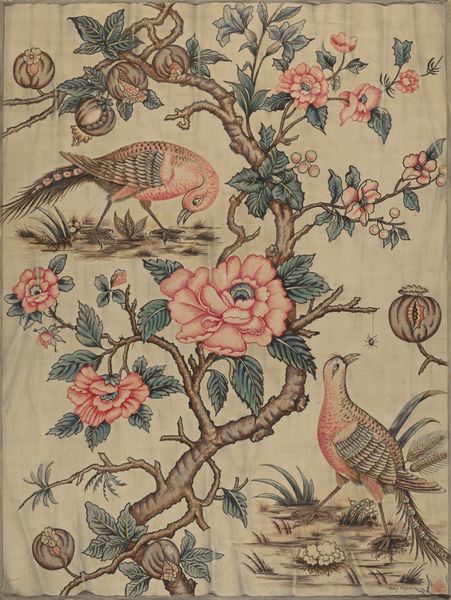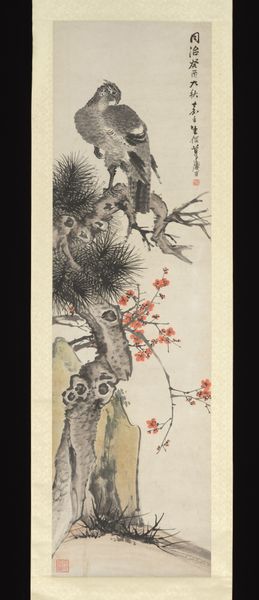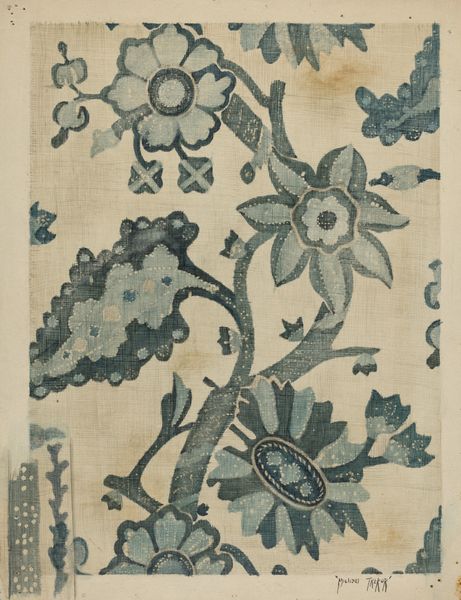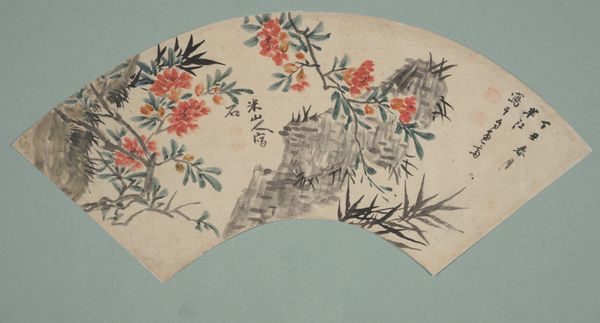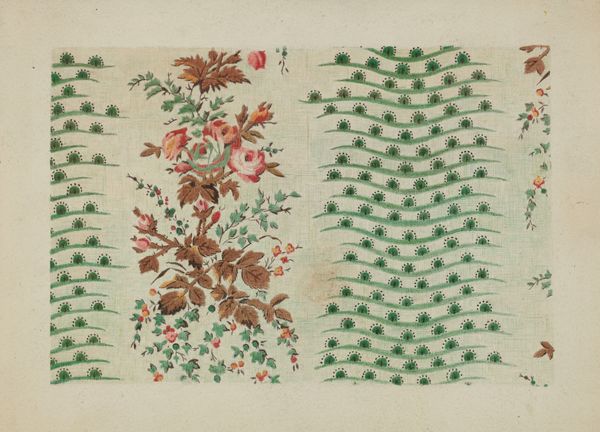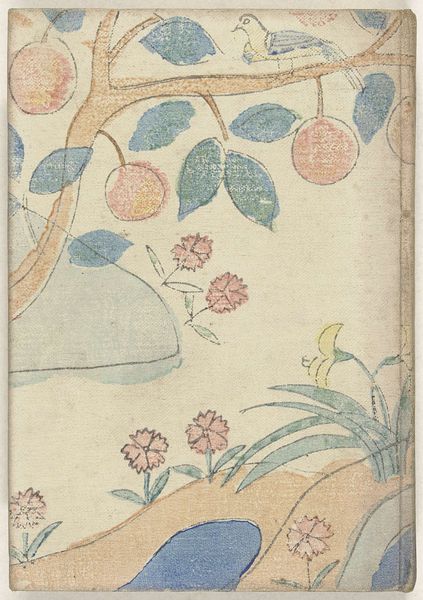
Chinoiserie from Nouvelle Suite de Cahiers Arabesques Chinois 1790s
0:00
0:00
Dimensions: Plate: 7 11/16 × 5 7/16 in. (19.5 × 13.8 cm) Sheet: 9 1/8 × 6 3/16 in. (23.1 × 15.7 cm)
Copyright: Public Domain
Curator: Looking at this artwork, I’m immediately struck by the intricate detail and playful sensibility. Editor: Indeed. This is “Chinoiserie from Nouvelle Suite de Cahiers Arabesques Chinois” created in the 1790s by Jean Pillement. We see ink and watercolor on paper—a confluence of Asian-inspired motifs rendered with Rococo elegance. What do you make of this, in terms of production? Curator: Well, given the date and the medium, this piece would have been produced with meticulous handwork and probably reproduced in a print workshop setting to supply wallpaper and the like. The subtle watercolor washes enhance the fine linework, giving the illusion of depth. It appears to have been quite laborious. Editor: Exactly! These decorative prints circulated widely and speak volumes about 18th-century Europe’s fascination with East Asia—or, rather, their fanciful interpretation of it. This interest reveals both admiration and appropriation that are woven into complex power dynamics during that period of colonialism. Curator: The arrangement does have a dreamlike quality. See how elements like figures, foliage, and architectural details overlap with the livestock. What kind of person had this on their wall, though? Editor: Probably someone of means wanting to show off their knowledge and cultured sensibilities—though through a very Western-centric lens. Also consider the use of "chinoiserie" which became shorthand for frivolous decoration. Curator: Fascinating. It feels quite detached from lived experiences of those in East Asia, really showing off wealth. Editor: Yes, because it offered a way to express oneself while implicitly signaling an elite worldview. A perspective born of social privilege is embedded within each delicate line. Curator: So by deconstructing its visual elements and materials, we reveal how something seemingly innocent speaks volumes about complex power dynamics. Editor: Precisely. And recognizing this helps us critique similar representations that prevail even today. Curator: Definitely food for thought next time you're decorating a room, isn’t it? Editor: Absolutely. Thank you for drawing attention to that vital relationship between craft, culture, and societal discourse.
Comments
No comments
Be the first to comment and join the conversation on the ultimate creative platform.
